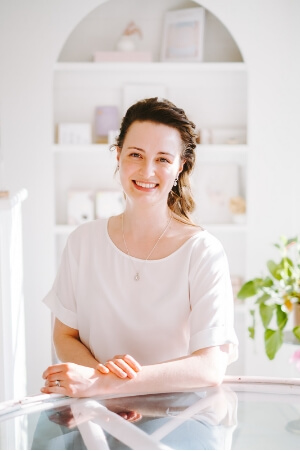There are many website hosting providers in the world, and you have a huge choice when setting up your website.
I’d suggest choosing a hosting provider native to the country you live in. This is for a couple of reasons. Firstly, you pay for the service in your own currency, and so are not subject to fluctuating exchange rates. Secondly, it’s much easier to contact customer support services if or when you need to talk to a person on the phone.
How to Choose your Website Hosting Package
Setting up hosting is a two-part process. Part one is choosing a domain name and top-level domain (TLD: the .co.za, .com, .com.au part of your address – more on this in a bit) and part two is choosing the amount of space that your website will occupy on your chosen service provider’s servers.
There are a few things to think about before you dive into choosing your hosting package. The most important of which is your budget. In most cases, the URL that’s local to your country will likely cost less than a .com. So that’s .co.uk if you’re in the United Kingdom, .co.za if you’re in South Africa, and .com.au if you’re in Australia.
I also recommend that you think about what sort of content you’ll be publishing on your site. Is your website likely to have a lot of images? Are you wanting to grow your website in the longer term to publish more pages, create more blog content or add more image galleries? In all of these cases, you would need to purchase more hosting space in the future. However, I would recommend starting small so that you “grow into the site” slowly and aren’t purchasing a package with a large amount of hosting space that you aren’t using immediately.
Choosing a Domain Name
A domain name is an important choice to make. It’s going to become part of your brand, so it’s wise to choose your business name as your domain name. If your business name has special characters, I recommend spelling it out in letters. I also suggest avoiding the hyphen as it’s clumsy and difficult to remember when visitors are recommending the site to someone else.
Sometimes your first choice may already be taken by another website. In this case, get creative and add a word or two to the domain. This also helps you tell potential visitors more about your website immediately. For example, add the name of your city or country to the end of the name: Peter’s Coffee Shop might become “peterscoffeeshopberlin.de”, and a company called “Dynamic Recruitment” might become “dynamicrecruitmentaustralia.com” (Not actual company names, just used as examples).
What are Top-Level Domains (TLDs)?
There used to be very few options for TLDs – .co.za (if you’re in South Africa), com.au (for Australia) or .com. There are government-specific TLDs (.gov), NPO-specific TLDs (.org), and educational institution-specific TLDs (.edu or .ac). Vanity domain names are a growing trend on new websites. You can now claim a huge variety of TLDs – from the genuinely nifty to the quirky to the slightly strange: .me, .info, .gallery, .builders, .diamonds, .plumbing, .technology, .clothing, .singles, and many more.
A useful extension to this is the geographic TLD, for example, in South Africa: .capetown, .joburg, .durban. These are useful for a few reasons, but most importantly, it lets potential visitors know where you are located, so that if a user is looking for a business that’s local to where they’re searching from, that they’ll know quickly that you are a relevant search result.
Choosing the Space you need for your Website Hosting
When starting a new site, I’d suggest going for a small hosting package. You can always increase this later if you find that you are frequently adding content to your website. (You can increase your storage limit by chatting to a customer service representative over the phone, and many website hosts offer a text chat service.)
If you aren’t checking on your storage usage regularly, you may be unaware that you’re reaching your allocated limit. You should receive an email from your hosting service to inform you that you’re reaching your storage limit. Also important to remember is that it is possible that your email and website share hosting space, so the amount of mail you store in your email account contributes to the total amount of stored data.
Hosting Payment Structure
Firstly, let’s chat about the top-level domain fee. Your choice of top-level domain affects the overall yearly cost of the website. The cost of a .com domain seems to have been reduced significantly in the last few years. Vanity TLD’s cost a little bit more.
Paying for the top-level domain happens once a year for every year the website is live. You “rent” space from your hosting provider to give your website a place to live online, and, like any rent, this is paid monthly.
If a website owner fails to pay for their hosting, the service provider takes the website offline. Luckily no data is lost when this happens – simply settle the account with the hosting provider and the website will be back online once the payment is processed.
You also have the option to pay for your hosting once a year. This is a great long-term plan as you save a bit of money: the total once-off cost is a bit cheaper than the total amount you’d spend if you pay monthly.
Conclusion
There are many factors to consider when choosing hosting for your website, but I suggest not getting hung up on the technicalities as you can always talk to a customer representative and they’ll answer any questions you may have. The most important choices to make initially are your domain name and your top-level domain as they are fixed for the lifetime of your website.
If you’d like me to help you set up your hosting, or if you’d like me to take the hassle away completely and do it for you, contact me. Fill in the form, tell me what you’re struggling with, and we can organise a call so that I can help you get going immediately.
This was a blog post written in 2016 when I and my business were in a very different place, physically and mentally. This was written from the perspective of someone who was a few months into running her own business in a different country from where I now live.
I have the experience of running a business, as well as 4 years of working at a marketing agency behind me, and thus my perspective has changed somewhat. I am sharing my older blog posts (from a previous iteration of my website) as a way to have a record of my writing online again.
Melissa De Klerk

Website Designer and Developer, tea lover
I am the owner and founder of Melissa Helen Co.
I have been a web designer and developer since 2015 and have worked with Wordpress since 2008. Since I started my business in 2016, my interests have revolved around business strategy and how that influences their websites.
I design and build websites for small to medium-sized businesses, have many years of branding experience, and have worked in marketing agencies.
You can send me a message me through my contact page, and find me on social media by clicking the buttons below.
